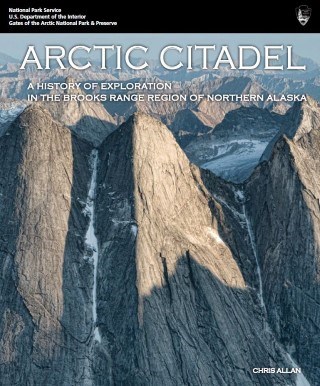|
The National Park Service conducts history studies to understand the relationship of people to the land within park units. These publications include Historic Context Studies, Historic Resource Studies, and others, all designed to help managers, interpreters, and the general public appreciate the importance of the past and historical resources. Below you will find links to history studies from Gates of the Arctic National Park and Preserve. 

Arctic OdysseyThis Historic Context Study describes the Koyukuk River gold stampede in 1898-99 and the influence of the gold rush phenomenon on the area where Gates of the Arctic National Park and Preserve is today.Contact the park to receive a copy of Arctic Odyssey. 
Arctic CitadelThis Historic Context Study focuses on exploration in the Brooks Range and across northern Alaska from the early 1800s to the present; it also examines how the reasons for exploration in this region have changed over time.Contact the park to receive a copy of Arctic Citadel. |
Last updated: November 16, 2022
